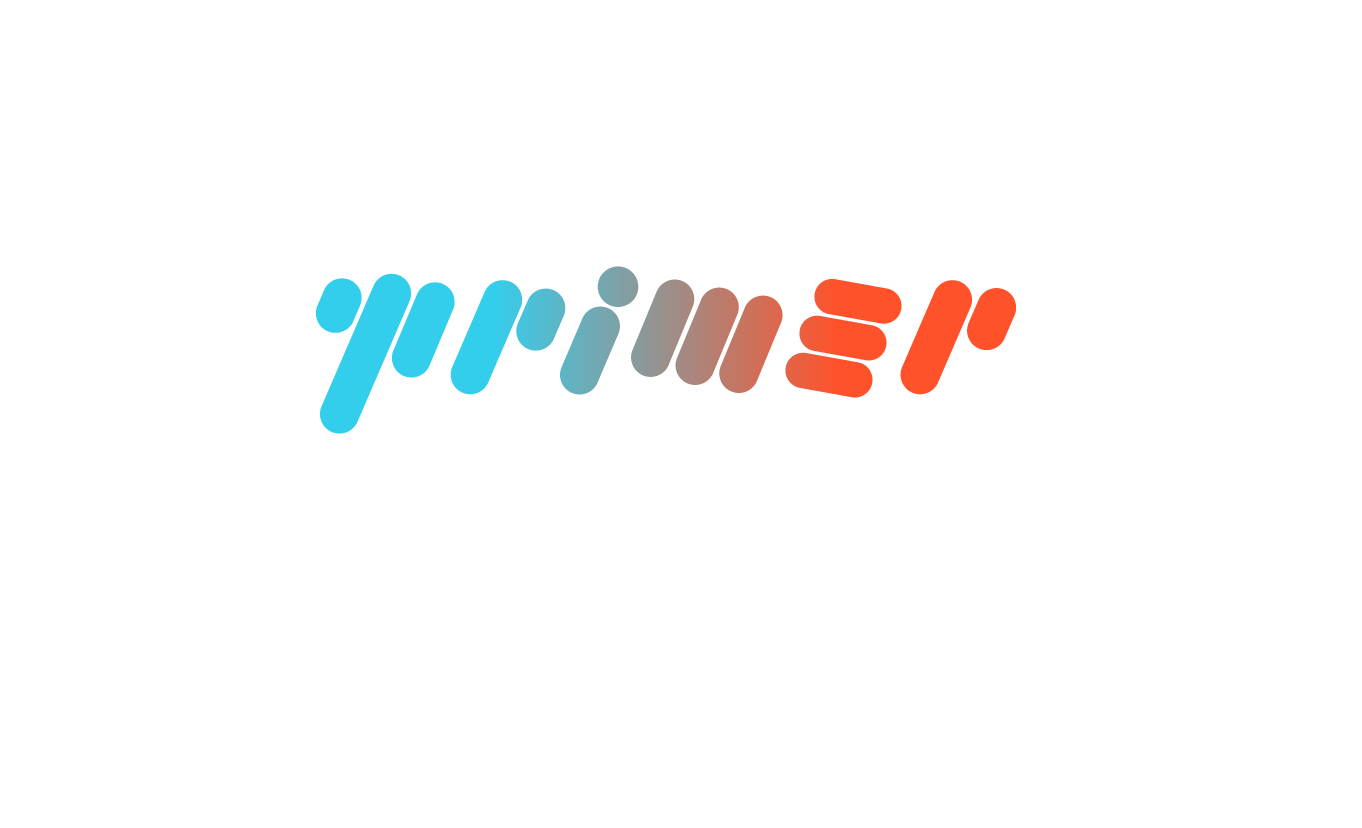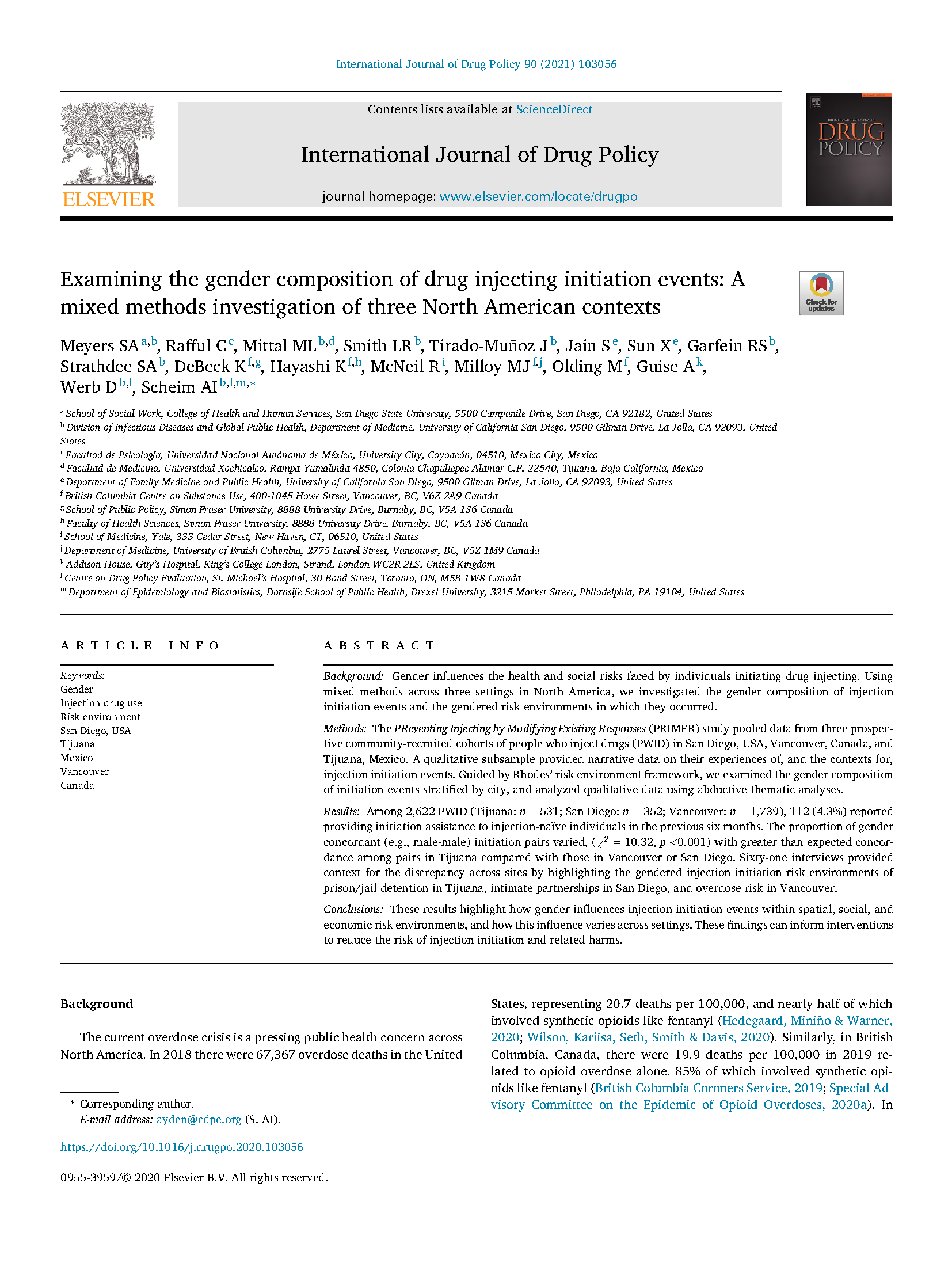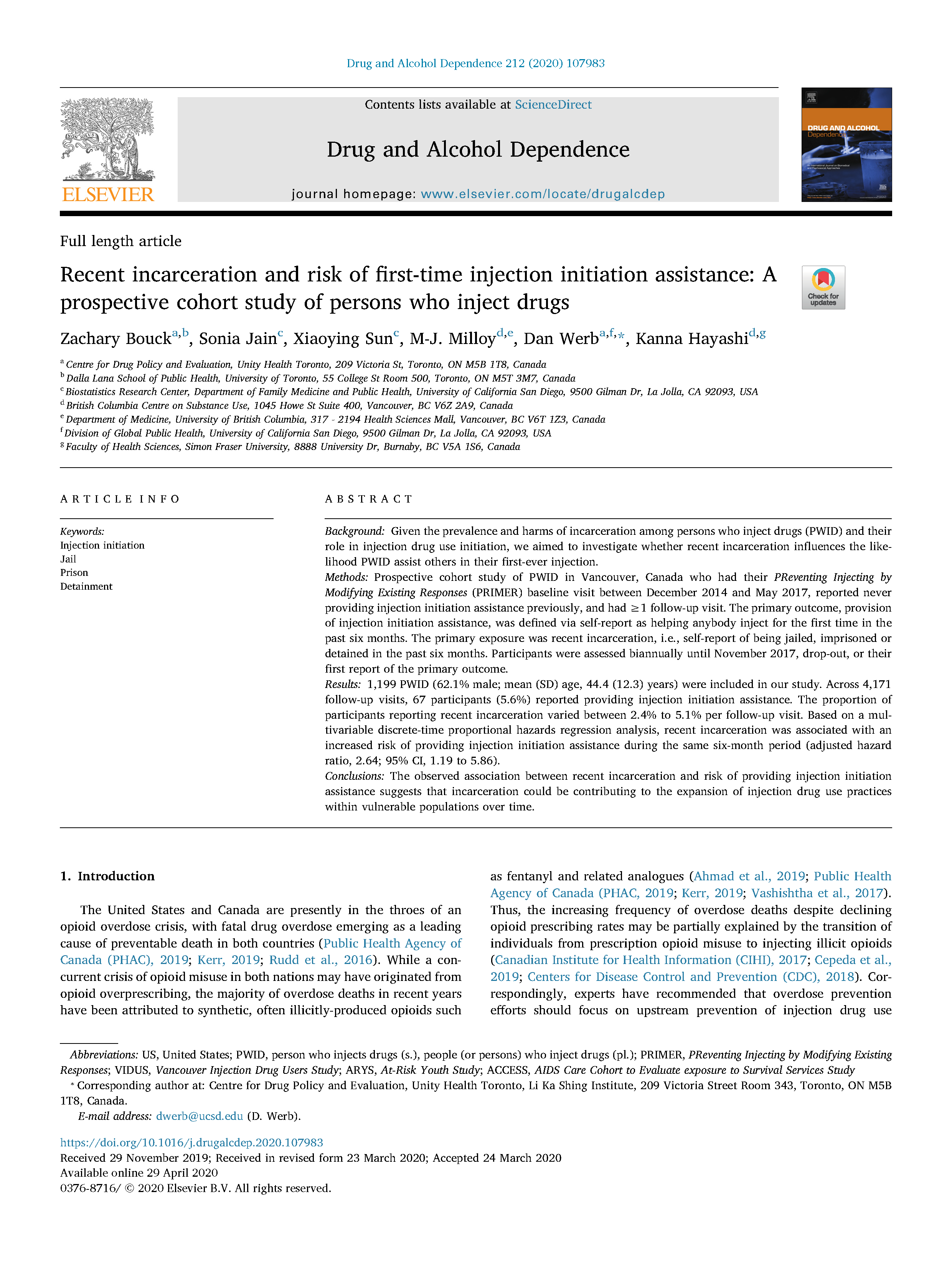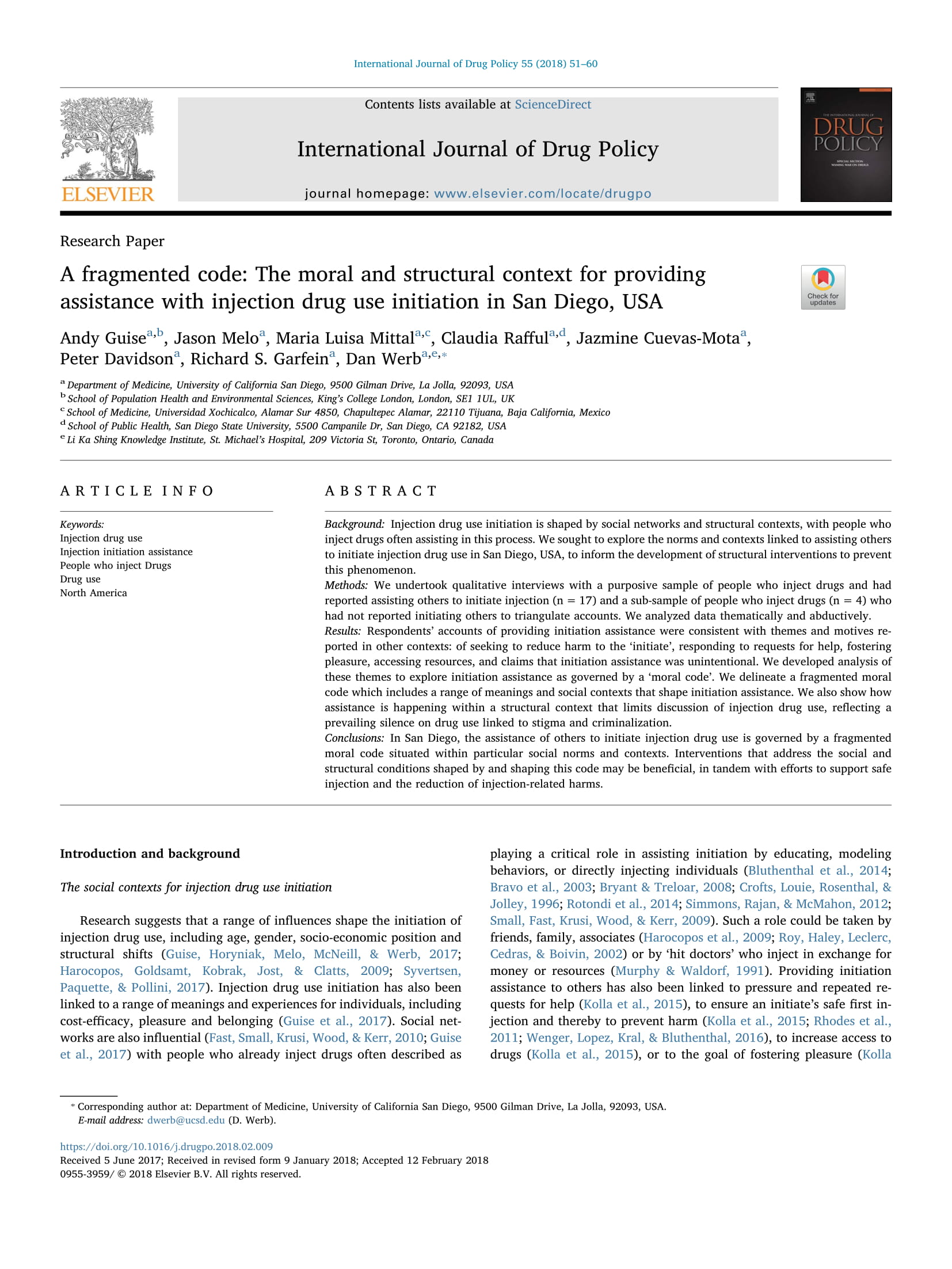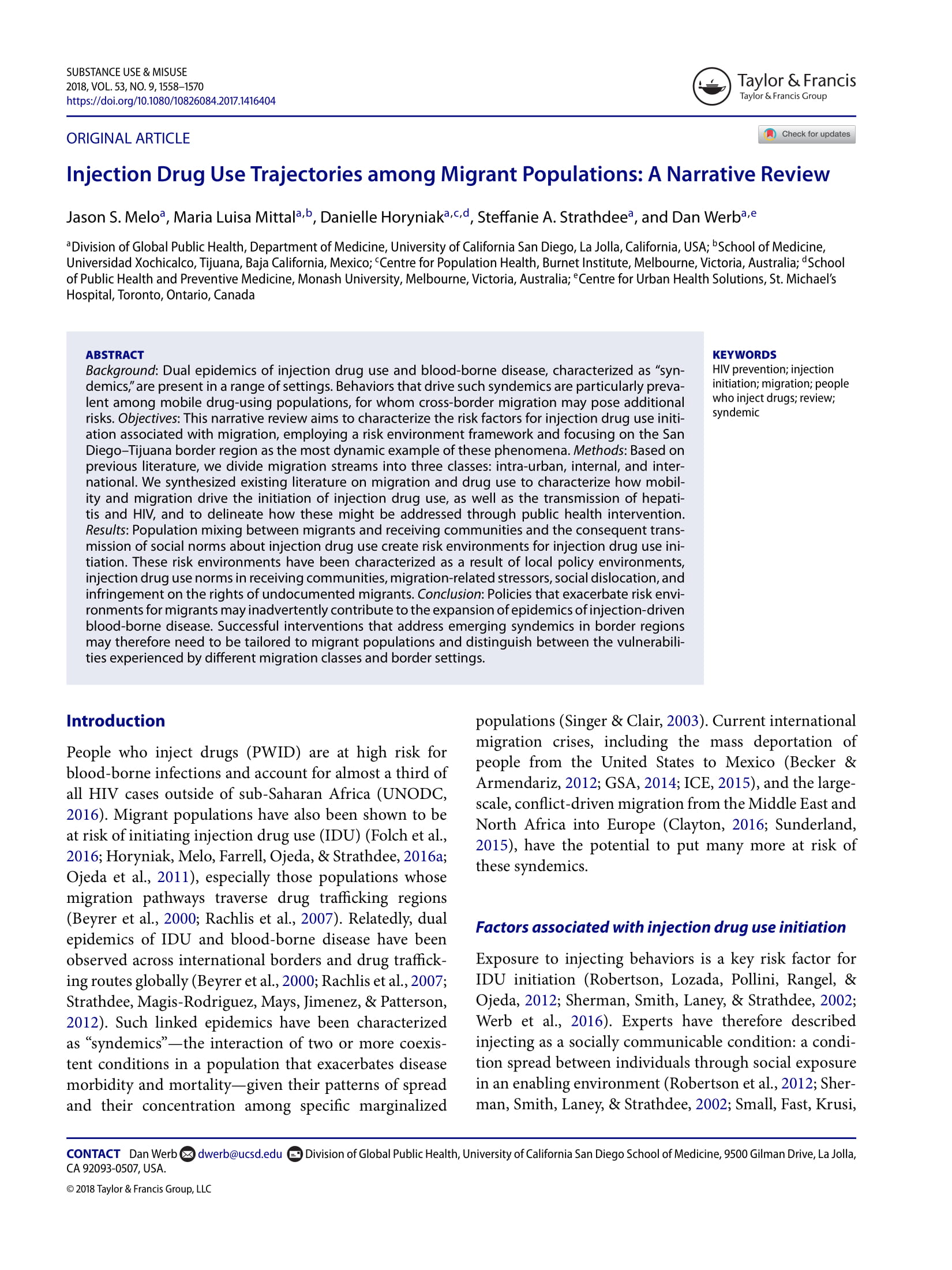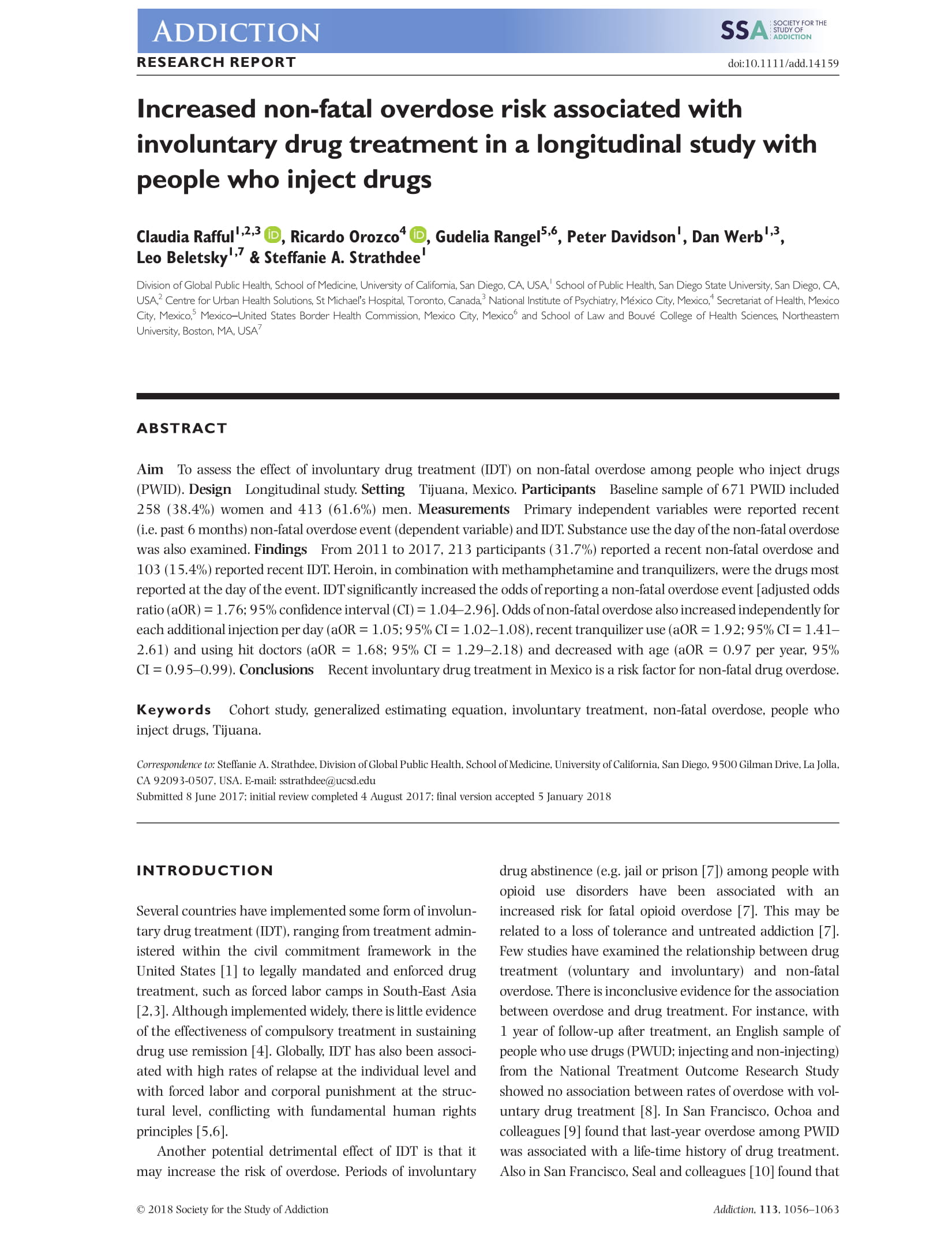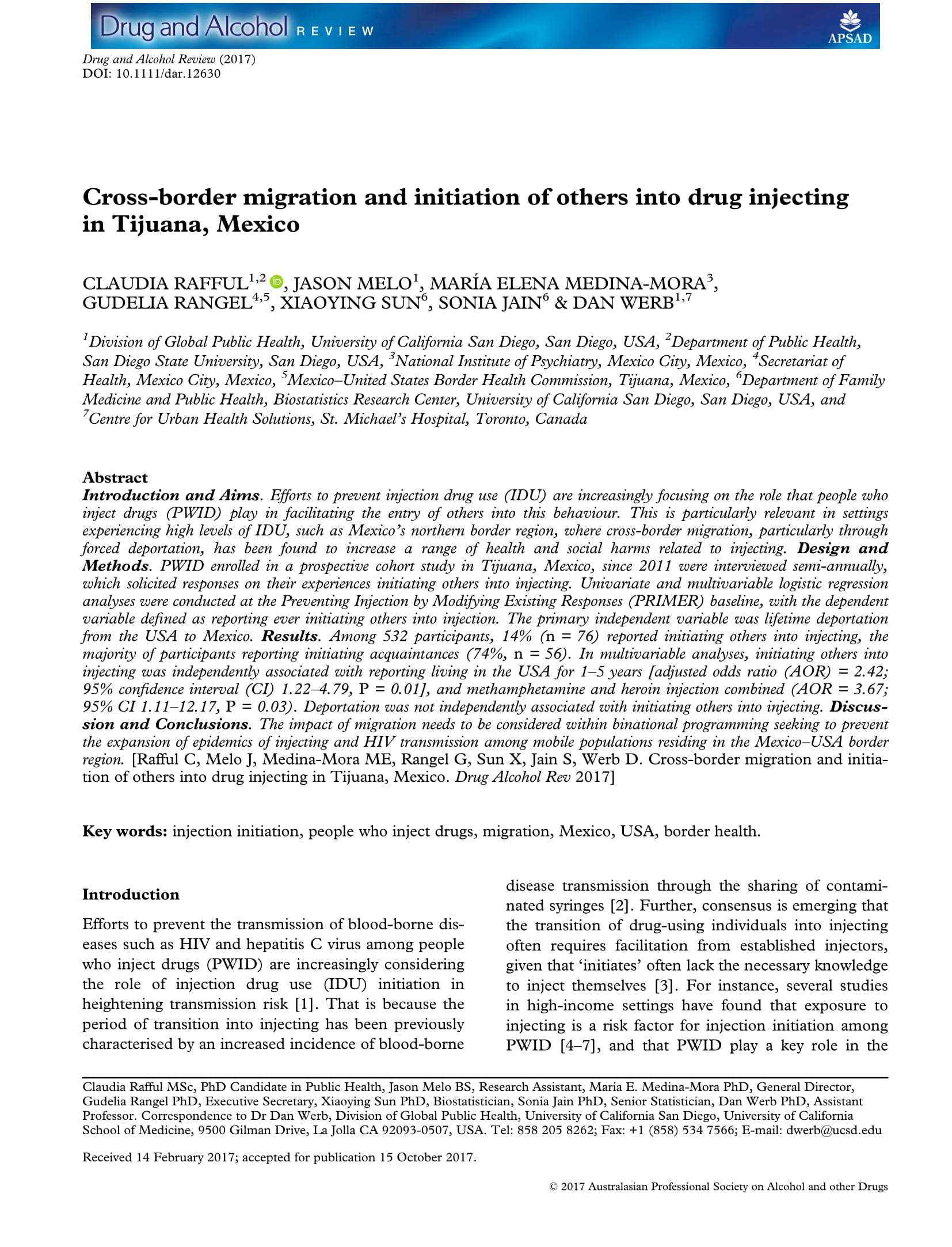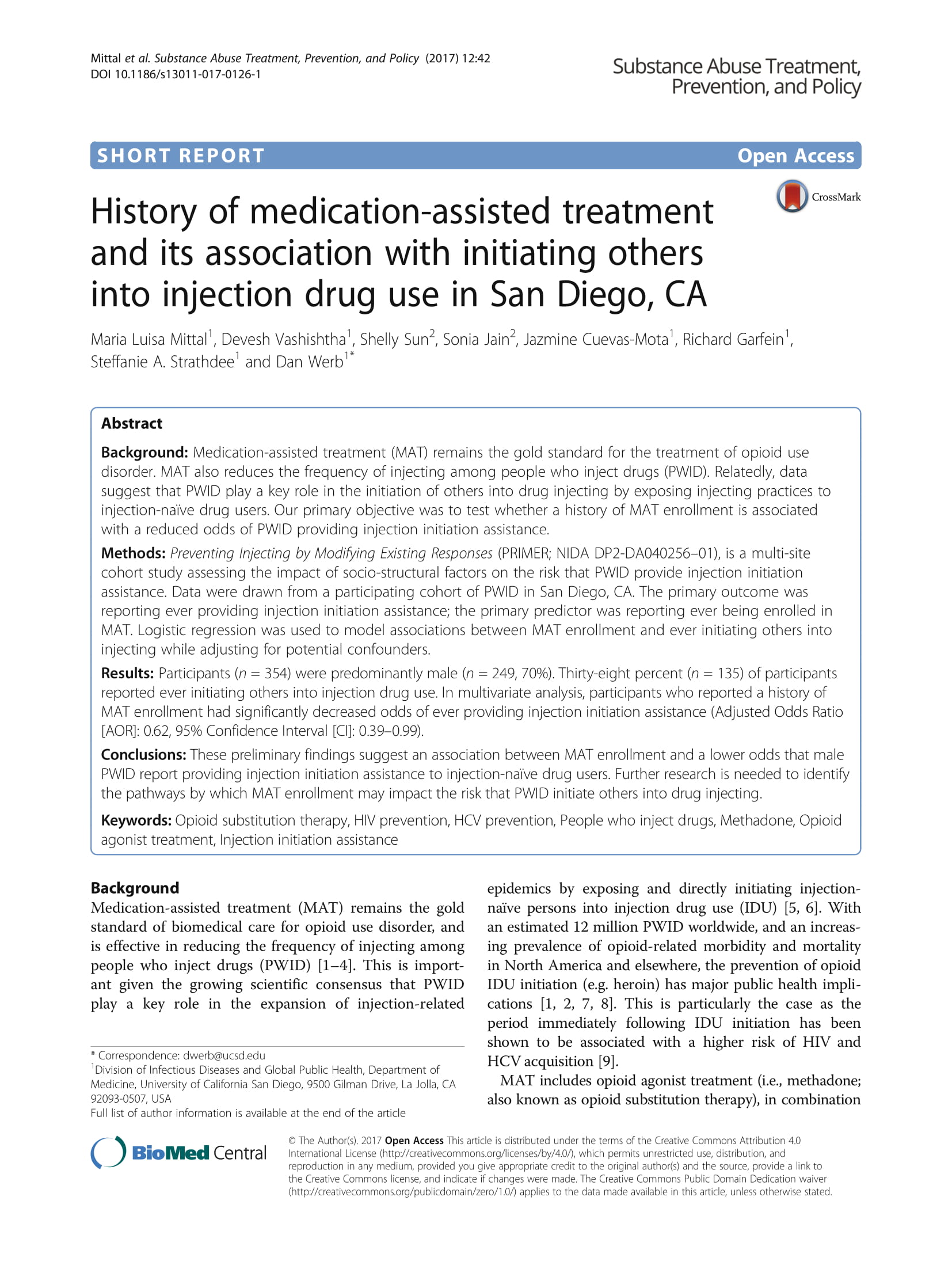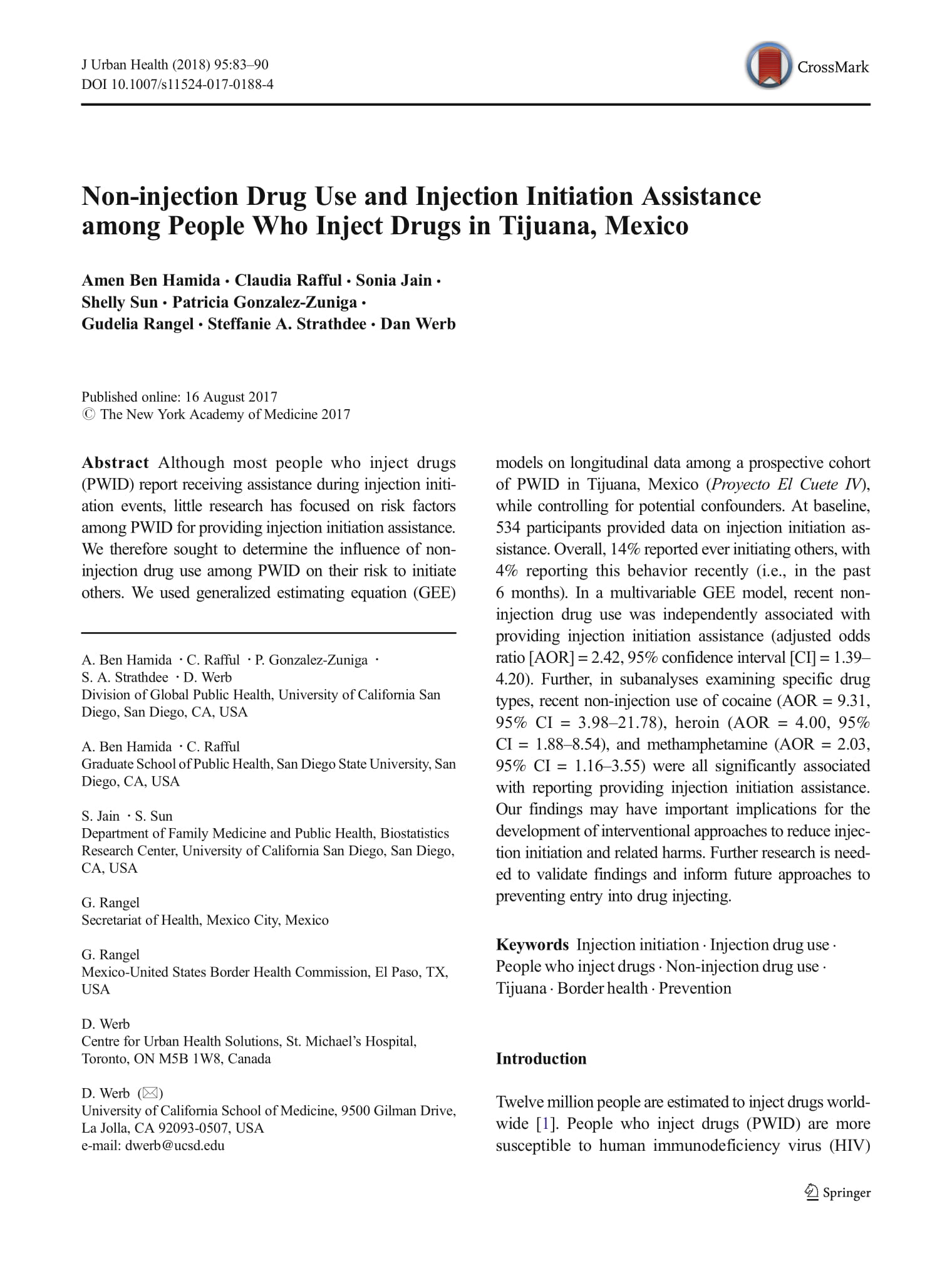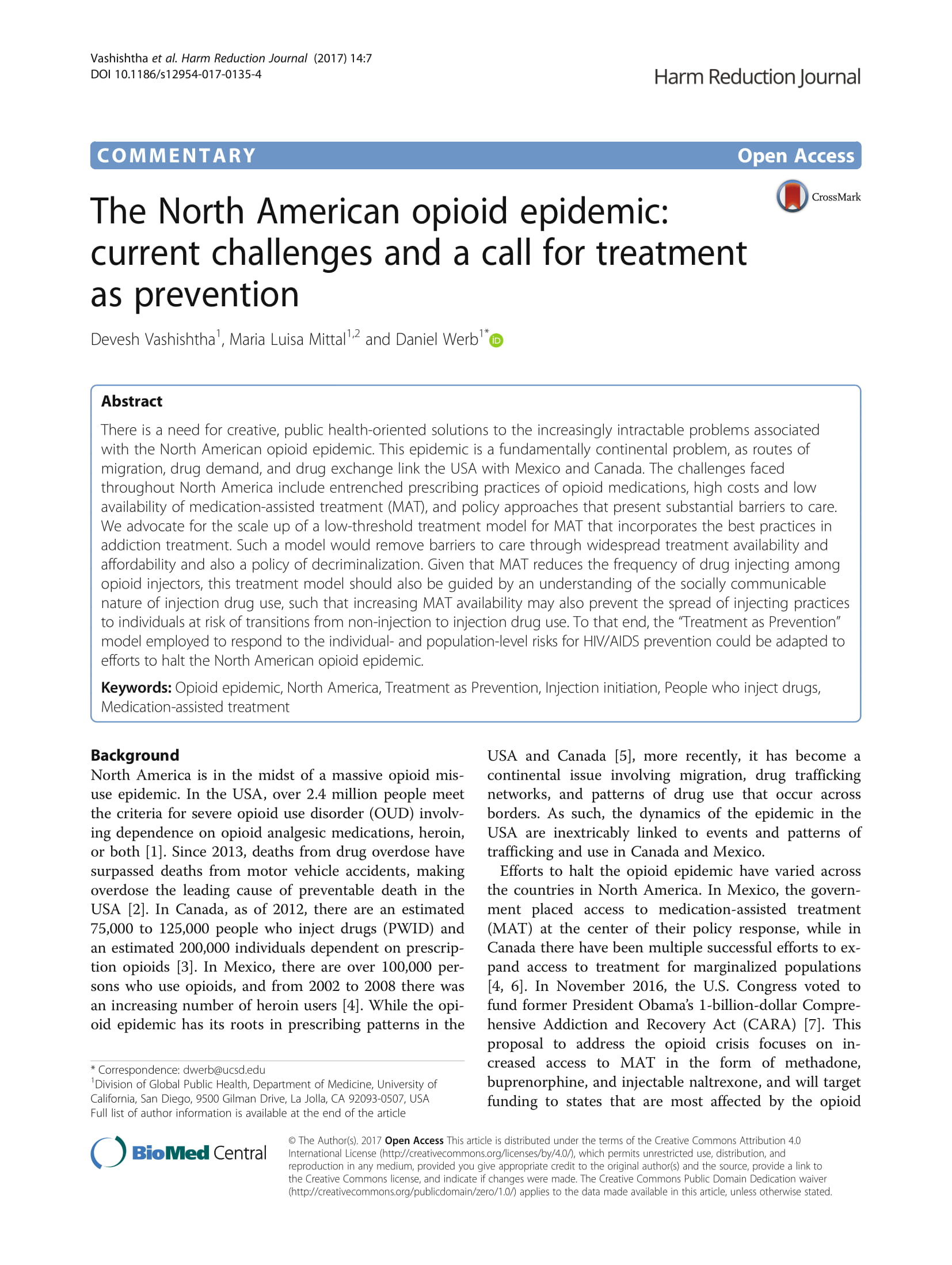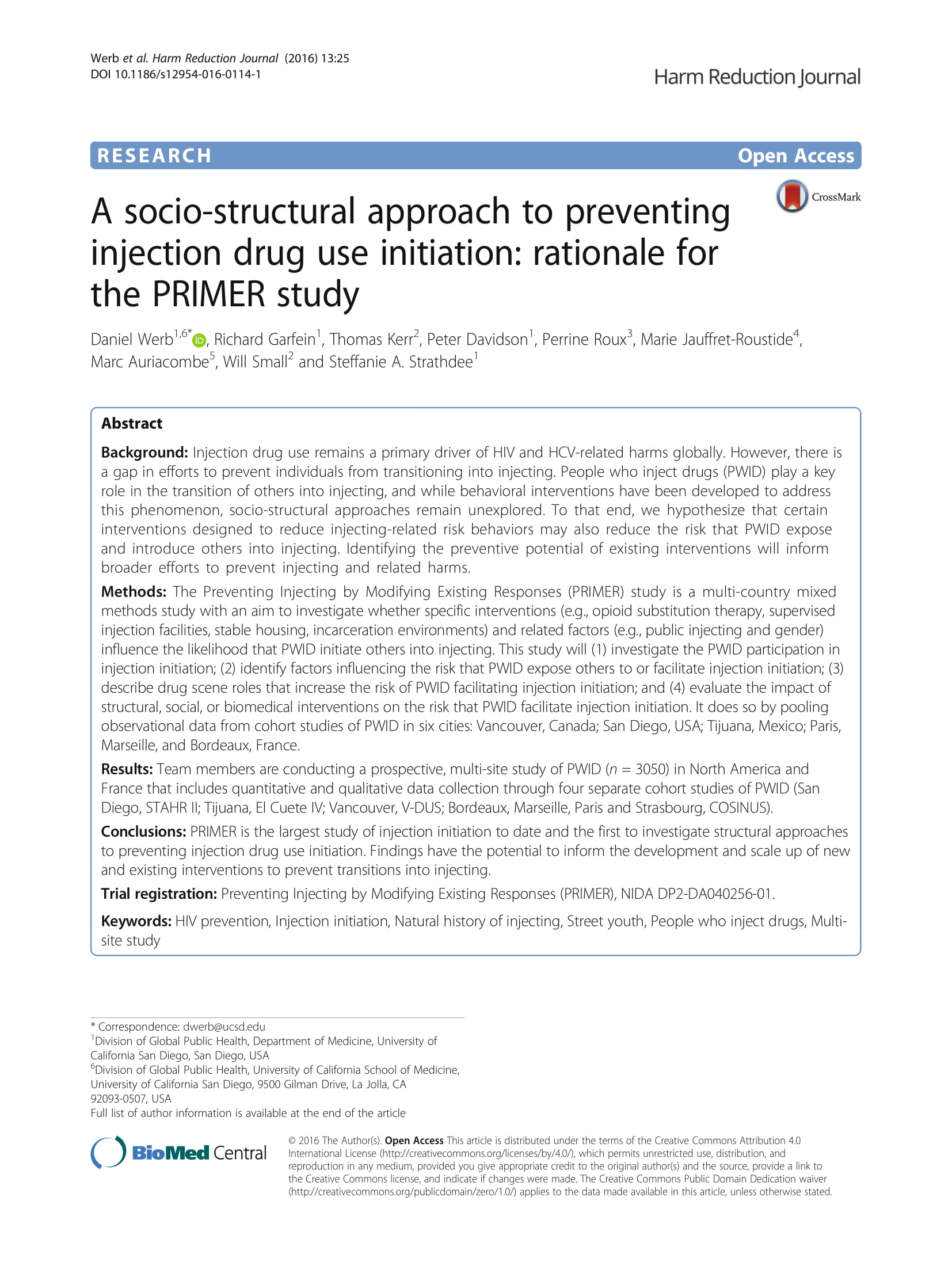Do Law Enforcement Interactions Reduce the Initiation of Injection Drug Use? An Investigation in Three North American Settings
Abstract
Background: The prevention of drug injecting is often cited as a justification for the deployment of law enforcement and for the continuation of drug criminalization policies. We sought to characterize the impact of law enforcement interactions on the risk that people who inject drugs (PWID) report assisting others with injection initiation in three North American countries.
Methods: Cross-sectional data from PWID participating in cohort studies in three cities (San Diego, USA; Tijuana, Mexico; Vancouver, Canada) were pooled (August 2014-December 2016). The dependent variable was defined as recently (i.e., past six months) providing injection initiation assistance; the primary independent variable was the frequency of recent law enforcement interactions, defined categorically (0 vs. 1 vs. 2-5 vs. ≥6). We employed multivariable logistic regression analyses to assess this relationship while controlling for potential confounders.
Results: Among 2122 participants, 87 (4.1%) reported recently providing injection initiation assistance, and 802 (37.8%) reported recent law enforcement interactions. Reporting either one or more than five recent interactions with law enforcement was not significantly associated with injection initiation assistance. Reporting 2-5 law enforcement interactions was associated with initiation assistance (Adjusted Odds Ratio=1.74, 95% Confidence Interval: 1.01-3.02).
Conclusions: Reporting interactions with law enforcement was not associated with a reduced likelihood that PWID reported initiating others into injection drug use. Instead, we identified a positive association between reporting law enforcement interactions and injection initiation assistance among PWID in multiple settings. These findings raise concerns regarding the effectiveness of drug law enforcement to deter injection drug use initiation.
